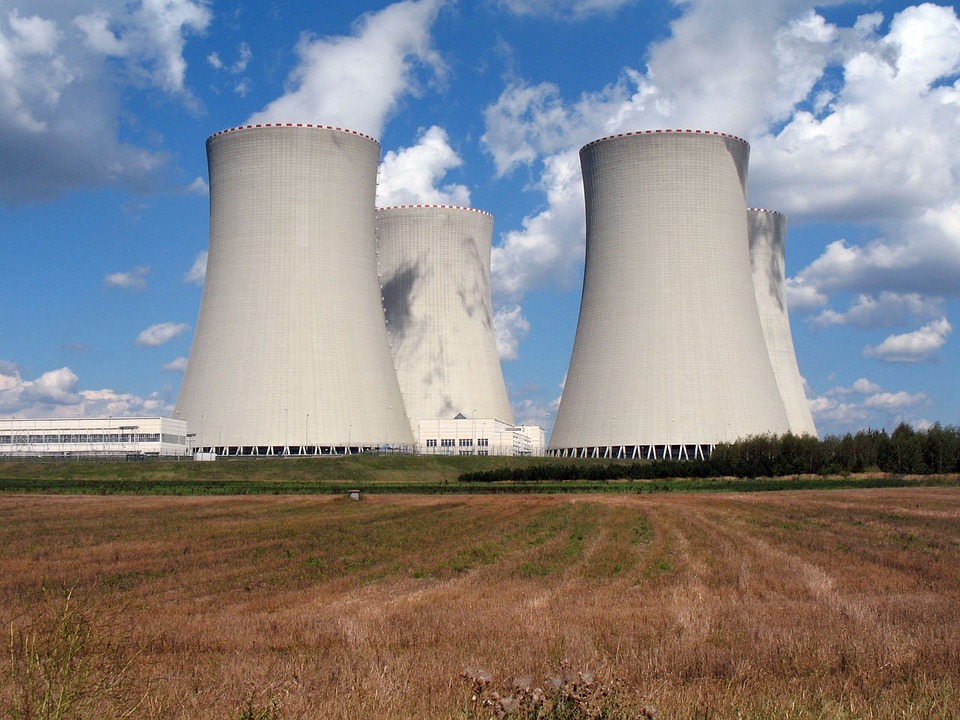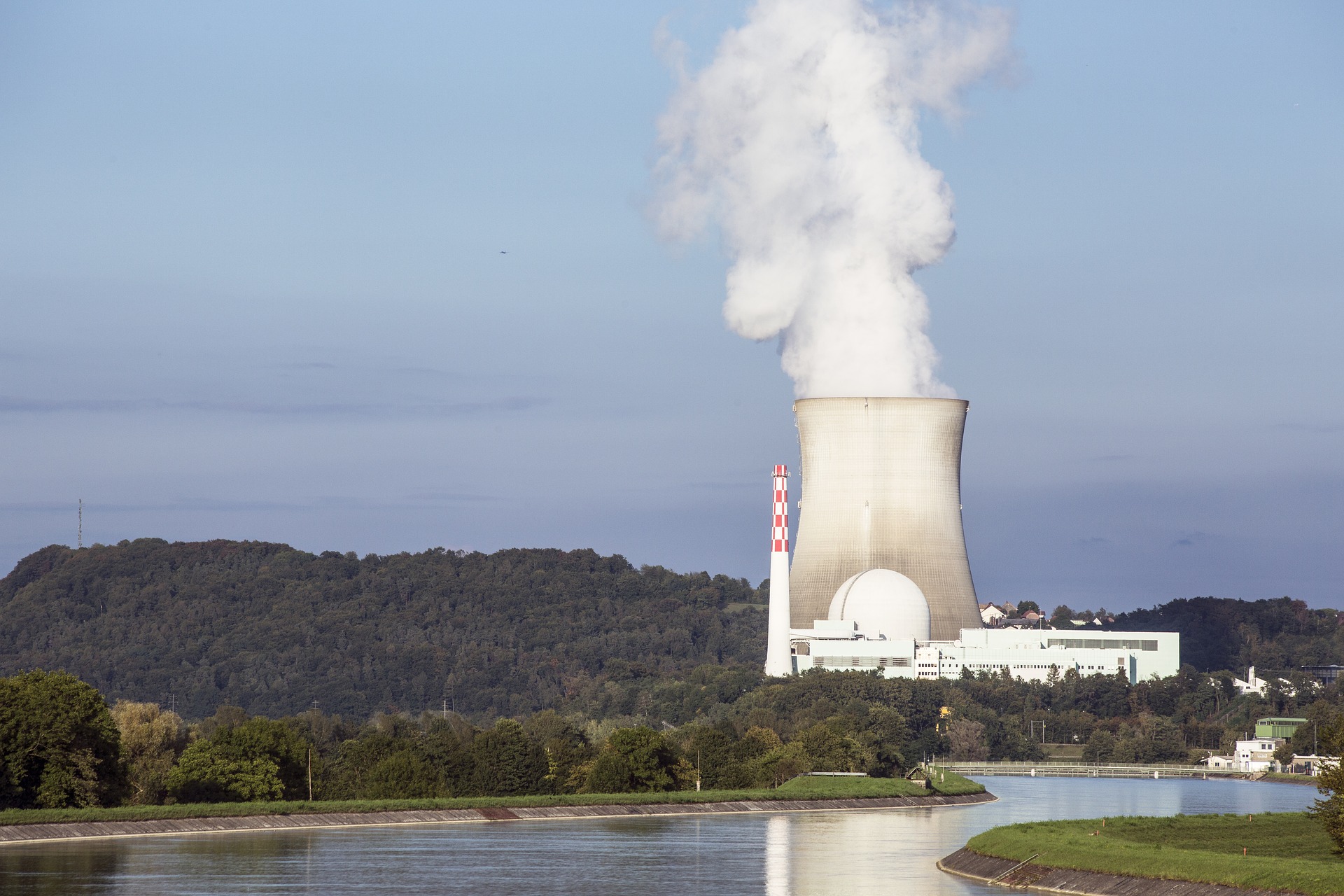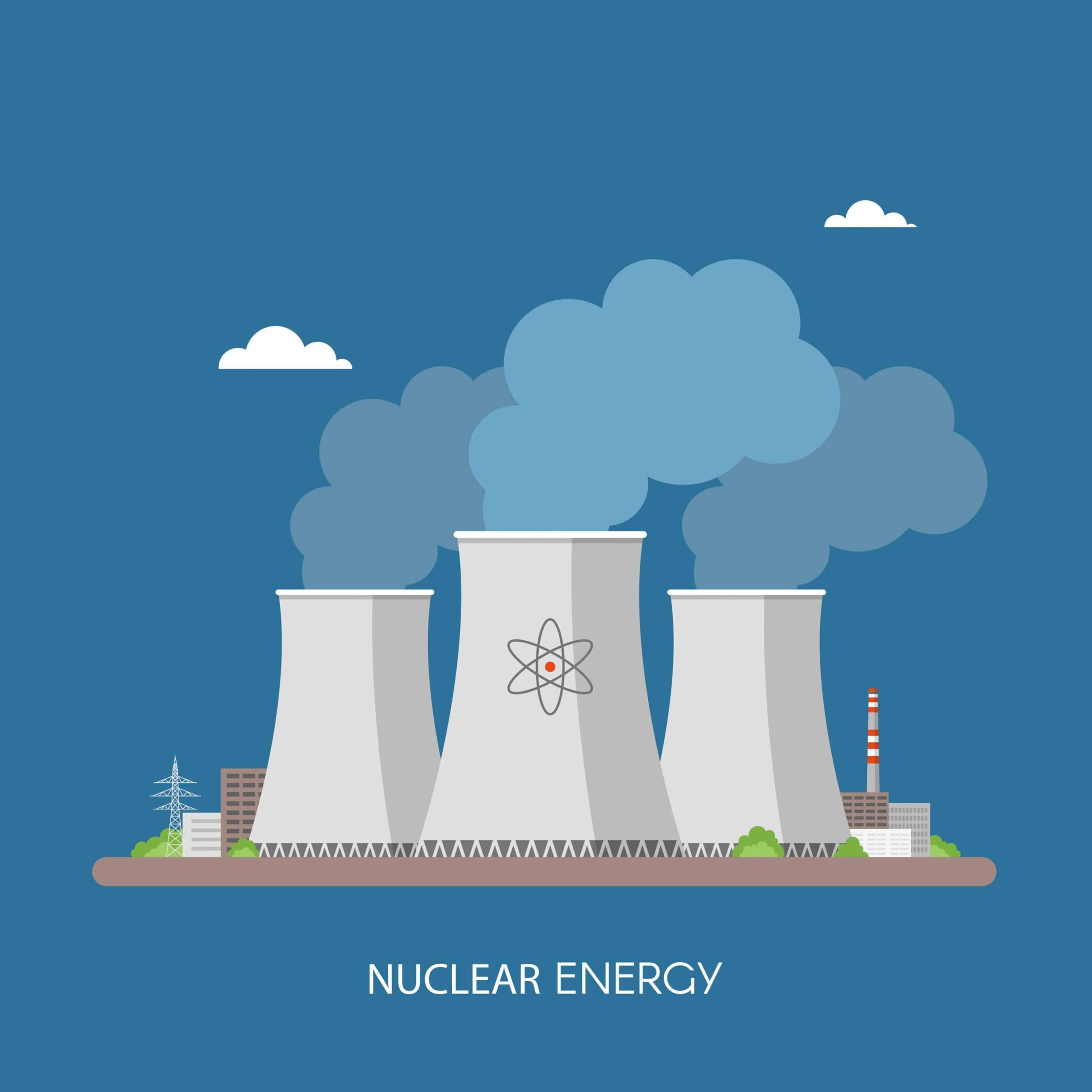While everyone has probably heard the term “nuclear energy” and likely made jokes about nuclear energy pros and cons involving extra fingers, glowing skin, or Homer Simpson, knowing what nuclear energy actually is and what it does is far less common. As far as human participation goes, nuclear energy has been around since the beginning of World War II, when several countries started looking closer at nuclear fission (a reaction where the nucleus of an atom splits apart and releases energy) with a mind of creating weapons. Not the best start, but after the war was over and the effects of nuclear energy became clear once the atom bombs were dropped, the United States in particular shifted gears and started looking into industrializing nuclear energy rather than weaponizing it further.
In 1951, the first electricity was produced using a nuclear reactor, and by 1954, the war-time work with nuclear energy was quickly declassified so it could be researched by the private sector and put to use.
So what is nuclear energy? Simply stated, it is using nuclear reactions that release their own energy to make heat. That heat is then usually used in steam turbines to create electricity in power plants.
Nuclear energy is used worldwide, particularly in France, Slovakia, and Lithuania, where almost all their electricity comes from nuclear power plants. The United States produces the most nuclear energy, though due to its size and energy consumption, only 19% of its electricity created this way.
Since the launch of the commercial nuclear energy industry in the late 1940’s, the usage of nuclear power has at times been somewhat controversial. As is the case with all largescale energy sources, nuclear energy is possessed of its own unique advantages and disadvantages. Nuclear power plants are more easily sustainable in the short term than sources of non-renewable energy (such as coal), but the fuel required by nuclear plants to maintain nuclear fusion can be expensive to produce and dangerous to handle. Below we discuss a few nuclear energy pros and cons.
Pros of Nuclear Energy
Cost
Often the biggest tick in the pro column of an energy issue revolves around money, and nuclear energy can certainly check that box. Dollar for dollar, nuclear energy reactors are the most efficient current method for generating sustained power. They utilize only their radioactive isotopes (usually uranium) and water, which equal low fuel costs.
Longevity
Maintained correctly, a nuclear reactor plant can last hundreds of years, where solar, tidal, and wind powers are dependent upon a (geologically) short time frame. Even the reactor rods, often made with uranium, are good for about six years before they need to be replaced.
Safety
In addition to being cost-efficient to run and long-lasting, nuclear reactors and power plants are actually made to be as safe as possible. It almost requires deliberate intentions to mess one up, as there are redundancies on top of redundancies to prevent anything going wrong. As for the reactors themselves, radioactive to the point of being deadly, they are usually isolated in several feet of concrete, steel, and lead to ensure that the radioactivity stays contained. The current generation of reactors in operation and those being constructed, Generation III, have not failed in the way the Generation I and II reactors did.
Cleanliness
Environmentally, nuclear energy is nearly equal to renewable energy sources when it comes to carbon dioxide emissions and other air pollutants that create smog. Fossil fuels create a staggering amount of these emissions, while nuclear energy releases comparably tiny amounts during operation.
Potential
Nuclear energy also has the benefit of being relatively new, and there is still so much to learn and develop with it. The more money we devote to nuclear fission reactors, the more research goes into nuclear power as a whole, and the closer we get to being able to power, for example, the entire U.S. Eastern seaboard with a battery the size of a cell phone. We’re in the Model-T stage of nuclear power generation. We understand how it works, but we’ve only barely glimpsed an idea of a Formula 1. The future could hold a Ferrari, if we can get there.
Reusability
There’s also a pro to be considered in how we use nuclear energy vs. how we have used it in the past, and hopefully never will again. Even now, it is estimated that 10% of light bulbs currently used in the United States are powered by nuclear fuel that used to be in Soviet-era warheads. The U.S. purchased this weaponized uranium for conversion into reactor fuel, and now the nuclear energy that used to be pointed at countries as a threat is being used to light homes and businesses. If we could keep that same kind of positive action going, the future might only improve, and the legacy of nuclear energy can be redeemed from a devastating weapon into a beneficial power source.

Cons of Nuclear Energy
Spatial Requirements
Nuclear energy, and the power plants that generate it, are not perfect. The amount of land a current-generation nuclear fission plant takes up is enormous, and most cities refuse to grant permits to build them anywhere close to population centers.
Risk of Accident
Chernobyl, Three Mile Island, and Fukushima Daiichi are disasters that nobody wants to experience ever again under any circumstances, much less in close proximity to where people live and work.
Speaking of which, when a nuclear power plant goes critical, it does so in a massive and devastating way. In all three major nuclear incidents mentioned above, it was human error or a natural disaster that led to the fatal downfall of the power plants. To err is human, after all, and currently, there is no way to control or prevent natural disasters. The problem is, nuclear energy is run by humans, so it is unrealistic to expect that accidents won’t happen in the future by that route, regardless of how much or how little it is implemented into our lives. And until Mother Nature starts accepting suggestions or requests, it’s impossible to plan ahead or work around the inevitability of natural disasters in a way that would secure guarantees.
Toxicity
In addition, the nuclear waste created is highly toxic, even after it has passed its “good by” date. After a certain amount of time, the rods that create the nuclear reactions don’t produce enough energy to keep up a consistent amount of output. Disposal of those rods requires them to be sealed away to prevent them from entering the biosphere, and they can remain radioactive at extremely deadly levels for hundreds of thousands, even millions, of years. In addition to the high-level radioactive waste, things like clothes and tools used to work in a radioactive environment and only harbor low-level radioactivity are an issue. Proper disposal is key, but isn’t always easy. Reprocessing is an option, but it isn’t used worldwide.
Construction and Operational Cost
Cost appears again, but this time in the con column. The cost to build a nuclear power plant is extremely high, due to the stringent measures taken to ensure that it is as safe as possible and the scale of such a project. This is no easy feat. Decommissioning a plant is a huge cost as well, as the radioactivity of such a structure lasts for a very long time and can affect the surrounding area if it’s not handled properly.
Climate change also has an effect on cost, as global warming makes the cooling of the power plants harder, especially ones with freshwater sources like rivers and lakes. Droughts, heat waves, and lower precipitation levels all have an effect, and as climate change continues and worsens, this problem will become more significant over time.
Environmentally, nuclear energy itself emits almost no carbon dioxide emissions during operation, but during the construction and running of the plant itself, that’s another story. Mining the uranium that most plants use for fuel also releases high amounts of carbon dioxide, making it difficult to determine precisely how environmentally friendly nuclear energy really is on the whole.
As with many things, the past of nuclear energy will always have act as an indication of its future. Nuclear proliferation is a concern, with countries potentially taking advantage of the many dual-uses that several of the nuclear energy technologies and materials possess to research and develop secret weapons. Terrorism, especially with intent to release radioactive contaminants into a community, is also a substantial worry.
As should be evident, nuclear energy pros and cons are heavily stacked on both sides. Without new innovations in nuclear technology to sway the balance, one can expect the debate over the future of nuclear power plants to continue.

The Future of Nuclear Energy
As it stands now, the future of nuclear energy is fairly uncertain. It could go either way, with the world either pursuing it or leaving it behind for other options. Policies involving nuclear energy vary wildly from region to region, with countries such as Japan phasing out nuclear power completely due to their terrible experience with the Fukushima Daiichi disaster, and others like China just starting big expansion so as to combat the overwhelming air pollution problem.
The debate between fossil fuels, nuclear energy, nuclear plants, and renewable energy sources has been going on in one way or another since nuclear energy’s start. There is no clear-cut solution, and it is unlikely that a unanimous, or even majority, decision or opinion will ever be reached. Nuclear energy pros and cons fuel the debate. Currently, Environmentalists for Nuclear Energy and the World Nuclear Association stand on the pro side of the issue, maintaining that nuclear energy and nuclear power plants are safe and sustainable. The con side has NIRS (Nuclear Information and Resource Service) and Greenpeace International arguing the dangers posed by nuclear power plants to the environment and people.
However, it does seem that as a whole, nuclear energy is taking steps forward rather than back. As of 2017, 60 nuclear plants in locations around the world are undergoing construction. More than 430 civil fission-electric reactors were operational in 2013. For the time being, at least, it seems nuclear energy is here to stay.









